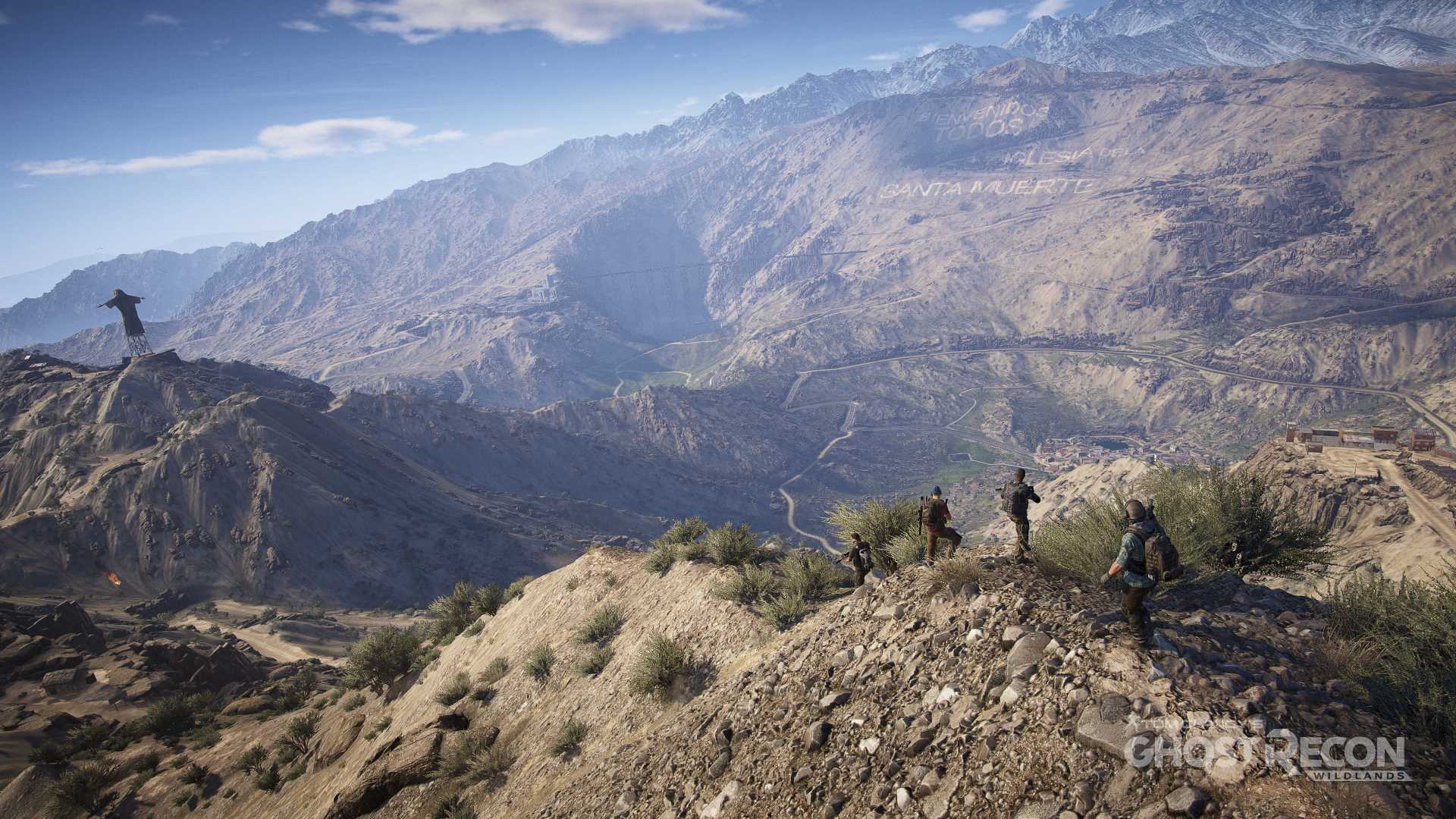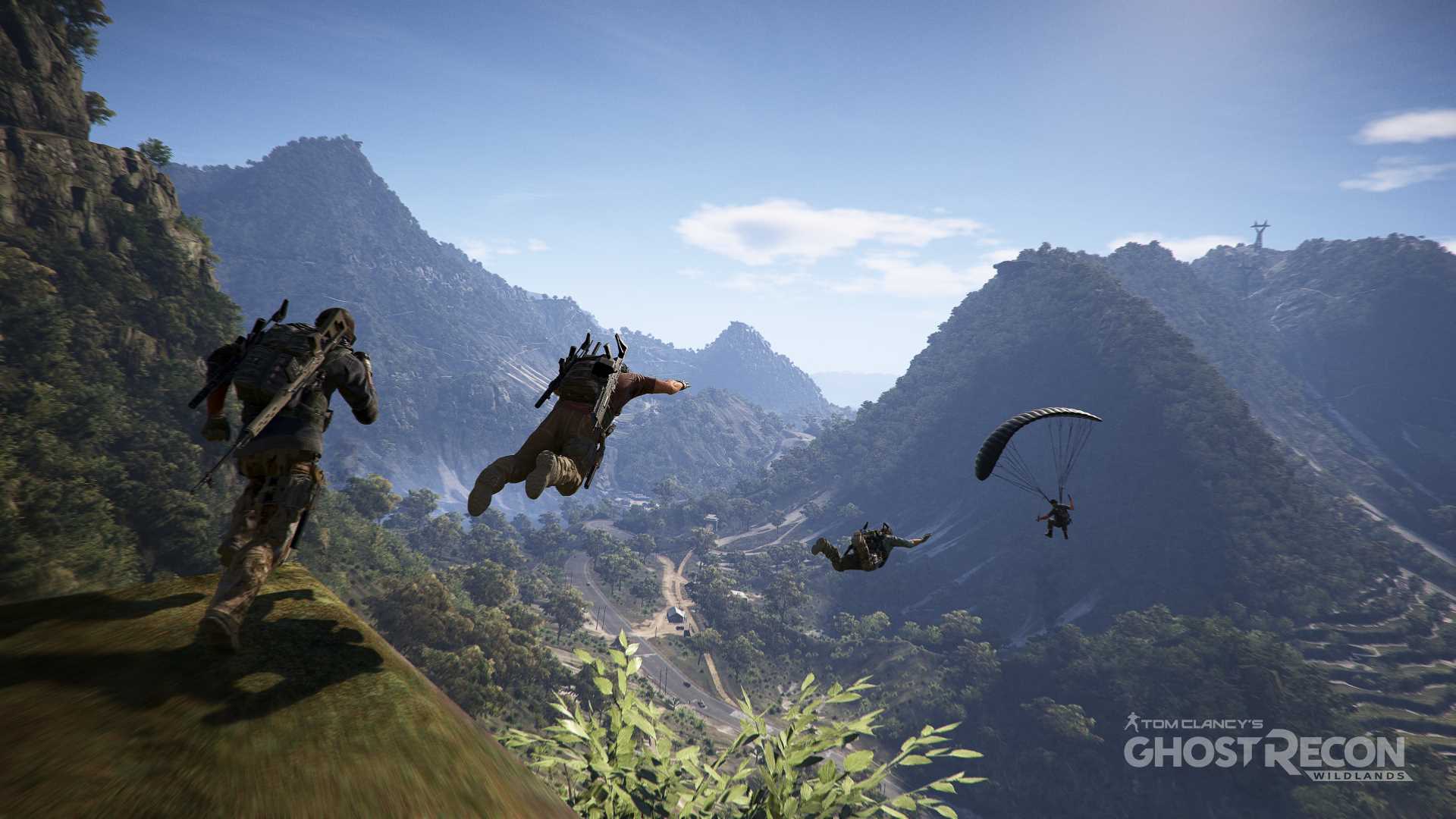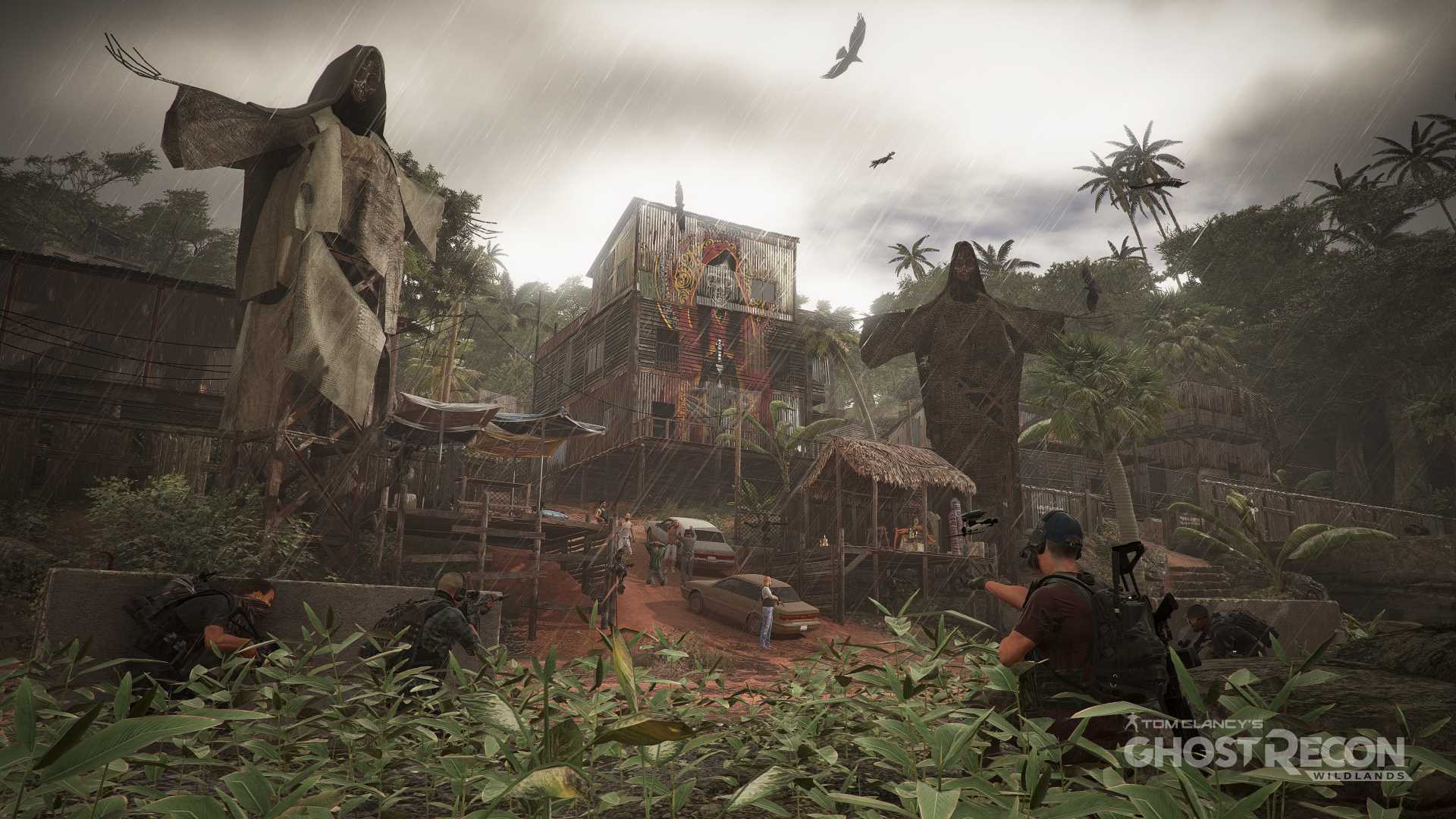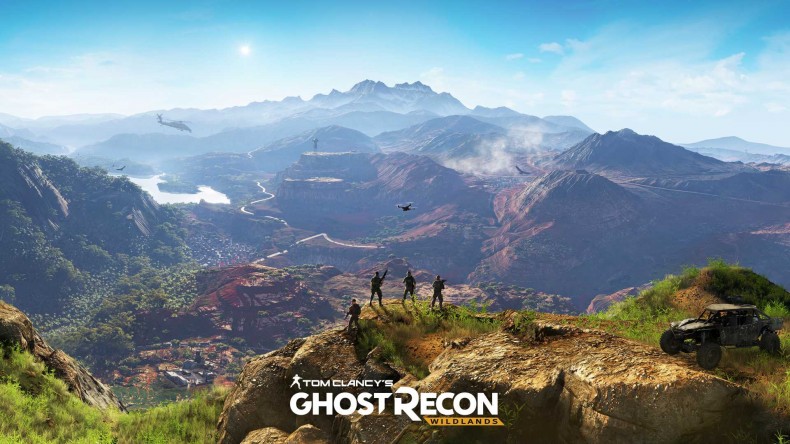March 7, 2017.
There’s an advert on the television at the moment for the army, featuring five or six soldiers walking through intense snowy weather conditions, when one of them starts singing (I’ve had) The Time of My Life from Dirty Dancing. They all have a laugh regardless of the fact they could be killed at any moment, and then a slogan pops up which says “this is belonging,” reminding us these people are friends first – that they are built on trust and solidarity above all else in the face of extreme adversity.
Ghost Recon Wildlands gives you that same feeling. If you play this game with friends (and I strongly suggest you do), you feel a unity unlike many other games out there. It’s because of the game’s scale and your freedom to go and do what you want, and the fluid nature of jumping from side mission to main mission, along with the way you need to be there for each other when shit hits the fan (and it will, a lot).
The game is set in one of the biggest open worlds I’ve ever seen; Bolivia has been taken over by the Santa Blanca – a huge drug cartel with control of the police and the government. Not only that, but the country is now considered a narco-state, distributing high levels of cocaine for the sole profit of El Sueno, his underbosses, and the rest of the cartel. That’s where you come in. You’re part of a team of Elite Special Forces known as Ghosts, working to take down the Santa Blanca and alleviate the oppression Bolivia faces. It’s not the best of stories, but it doesn’t need to be, but there are some pretty brutal moments in the game that I wasn’t expecting that help to remind you just exactly what you’re dealing with.

Let’s just get one thing straight: this game is humongous, and utterly overwhelming at first. There are a total of 26 provinces for you to explore, and in every province there’s a member of the cartel, ranging from underbosses, security buchons, and one of the heads of the four departments (security, influence, smuggling, production) that make up the cartel. You don’t have to kill every member of the cartel to get a chance at killing their boss (El Sueno) but you’ll get lots of rewards for doing so, such as skill points, special items, and supplies. By unlocking intel within the province, you’ll unlock story missions and eventually a shot at that province’s cartel member, so you can’t just go in and kill them straight away.
Outside of the main story, there’s so much for you to get involved in. Supply missions (side missions) let you earn resources for you to help upgrade different aspects of your skill set. These missions can range from stopping convoys, to helping the rebels to defend certain areas, and even stealing helicopters. There are also people scattered throughout Bolivia to interrogate for more information, revealing where certain skill points, weapon upgrades or supplies can be found. Sometimes, I was driving with no particular goal in mind, and I stumbled across a cartel stronghold and found loads of supplies, accessories and bonus medals, creating my own mission within the freedom of the massively dense open world. There’s not a lot of diversity in mission structure, but it doesn’t matter too much when you’re playing with friends.

In terms of gameplay, Wildlands has a range of combat options, allowing many ways to approach any given situation. You have a drone which can be sent into an area to scout it out (*cough* Watch Dogs 2), and can be upgraded down the line to allow for some neat enhancements such as an EMP to disable electronics or a small explosive to take out enemies without ever having to squeeze the trigger. There’s also a pair of binoculars at your disposal, and once enemies are tagged you can sync your shots – by doing so, you can order one of your team mates to engage one of the enemies you’ve tagged, which gives you the option to take out three or four soldiers at the same time without raising any alarms at all.
Moving around in combat can be sluggish because you don’t have an ability to dodge or roll, so in those moments where two or three enemies are zoning in on you, your best bet is to run away and regroup. It’s almost always a priority to go into any location stealthily, and you can crouch or go prone, sneaking up on an enemy and knocking them out. Switching between your two main guns is easy, and by tapping Triangle twice will let you equip your handgun. You can fire from the hip, but pulling the left trigger can change the third-person viewpoint to first (this can be changed by pressing the right trigger), and you can also switch which shoulder you look over by pressing the right bumper to give you ultimate control in how you execute your attack.

Customisation is a huge part of Wildlands and you can alternate between assault rifles, sub-machine guns, shotguns and sniper rifles, handguns, frag grenades, flashbangs, C4, and more. You can change depending on how you want your team to operate or rather what your strengths on when playing with friends. You can find and unlock parts for your weapons, changing anything from the sights to the underbarrel. You’re also free to change your outfits, and if you’re anything like me, you’ll spend a good twenty minutes wondering if your short-sleeved shirt should be white and black plaid, or black and red (it’s white and black, FYI).
Wildlands is good on your own, but playing in co-op is by far its biggest achievement. You can play with three other friends, and you can all join one of your campaigns. Your world is persistent, meaning you can replay story missions if you’ve already done them which will earn XP to go towards your character. Going back to the feeling of belonging I mentioned in the preface of the review, never have I had more fun in a co-op game. In our downtime, we flew up high in a helicopter (nearly 4km high) just so we could parachute out because we could. When we were getting down to business, communication was key, and we plotted the best way to attack before we ran in guns blazing. One time we blew up three different doors to a cartel building before we all ran in and neutralised our targets.
My favourite moment so far was when we tried to take out a Unidad (the policing faction in Bolivia) compound, but got overrun. We approached in a helicopter and landing on the outskirts of a nearby jungle area. A couple of us took out the snipers whilst the third tried to sneak into the compound. Just when we’d managed to take out everyone (or so we thought), reinforcements piled into the compound and overran us, forcing a couple of us to hole up in an empty tower. As we raided supplies, we failed to notice about 15 Unidad soldiers had circled us, and were heading up the stairs where we waited like sitting ducks at the top of the tower. We were still one member down, but after a few minutes, a helicopter came in from above and attempting to pick us up – it was our other teammate. Unfortunately, the helicopter crashed, but we were together again as a team. The soldiers came up the stairs and we tried to pick them off, but there were too many of them. We died – one by one, but we tried. We tried, and not before the teammates who crashed the helicopter heroically jumped to his death trying to get to a boat that could still have saved us.
It’s amazing just how impressive Wildlands is, both mechanically and technically. The weather conditions are gorgeous; thunderstorms on the horizon look stunning, and the red sun reflecting off the wet ground another small but surprisingly nice visual effect. I’ve had no real framerate issues, and for saying this world is so big, I never noticed any texture popping whatsoever. Ubisoft Paris has made a fantastic game, from the depth of customisation and wealth of missions, right up to the excellent co-operative experience.
Huge and wonderful open world
Co-op is so much fun
Visually and technically impressive
Generic story
Combat can be sluggish
There’s so much fun to be had here, and the co-op is probably the best I’ve seen in a long time. The country of Bolivia is massive and fun to explore, with plenty to do and visuals that never fail to impress.





